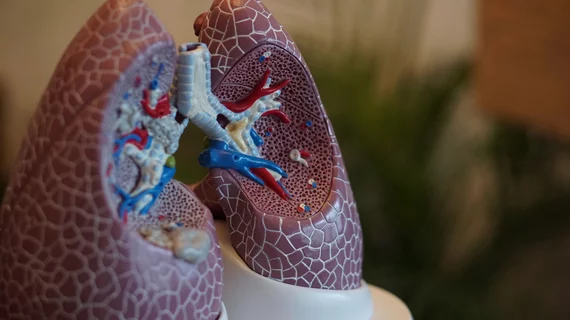AI helps radiologists spot lung tumors, drop false positives
A deep-learning software tool powered by artificial intelligence has been proven to boost clinicians’ ability to detect lung cancer on chest x-rays.
Seoul, Korea, scientists recently made that discovery in a retrospective study of more than 800 random radiographs. With the assist, they found the average clinician’s ability to detect an existing cancer jumped from 65.1% up to 70.3%, with false positives decreasing, according to their study, published Tuesday, Nov. 12, in Radiology.
Oftentimes, certain characteristics of lung lesions—size, density, location—make it harder for doctors to detect nodules on x-rays. But deep-learning based software that allows computers to complete tasks based on established data relationships can close that gap, noted Byoung Wook Choi, MD, PhD, a professor and radiologist with the Yonsei University College of Medicine.
He and colleagues analyzed 800 radiographs from four different imaging centers. About 200 were normal while 600 included at least one malignant lung nodule, with 704 confirmed tumors, total.
A group of radiologists then interpreted these x-rays and re-read them with the help of deep convolutional neural networks (DCNN). Choi found that with the machine’s assistance, the ability to detect existing cancer climbed by about 5 percentage points, up to 70.3%. Meanwhile, the number of false positives per x-ray fell from 0.2 down to 0.18. The latter finding could help address one of the biggest roadblocks to such technology’s proliferation.
"Computer-aided detection software to detect lung nodules has not been widely accepted and utilized because of high false positive rates, even though it provides relatively high sensitivity," Choi said in a statement. "DCNN may be a solution to reduce the number of false positives."

